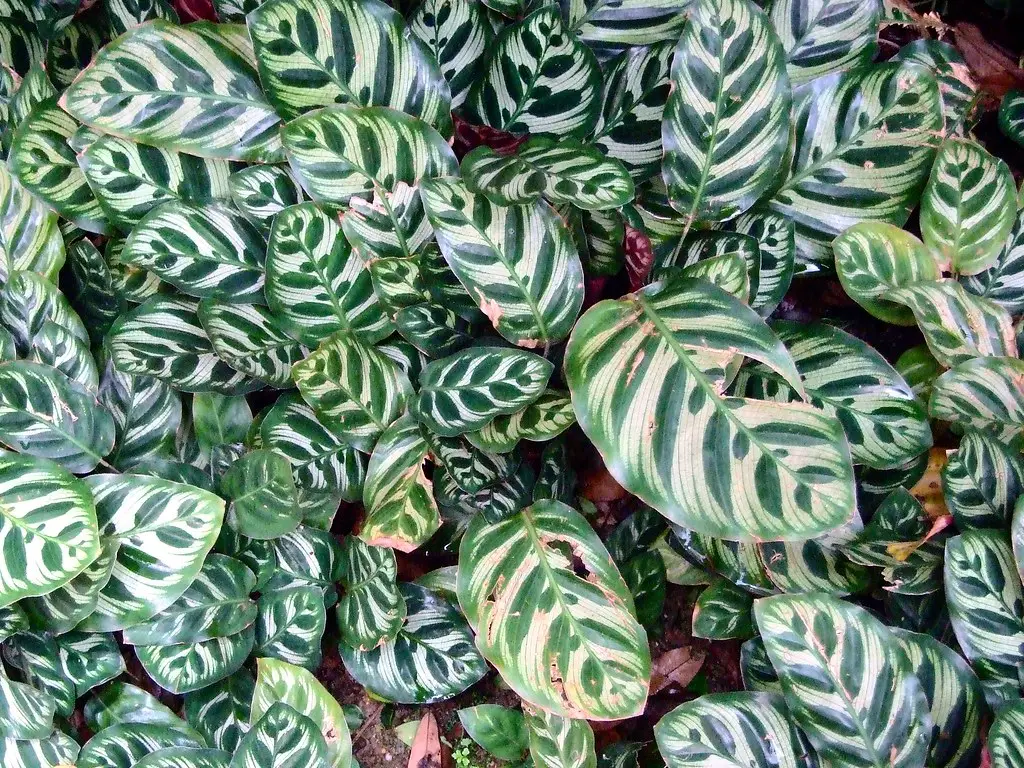The Peacock Plant, known for its stunning foliage and vibrant color patterns, is a visual feast for plant enthusiasts. With its striking resemblance to a peacock’s tail, the deep green leaves adorned with vibrant shades of purple, pink, or red make it an attractive choice for home gardeners.
Native to Brazil, the Peacock Plant (Calathea makoyana) belongs to the Marantaceae family. Its ornamental foliage is not only appealing to the eyes but also fascinating in its behavior; the leaves fold together at night and unfold in the morning.
Caring for a Peacock Plant can be a bit tricky, particularly in maintaining its vivid leaf colors. However, with proper care and attention, this plant can become a thriving, beautiful addition to any indoor space.
| Aspect | Details |
|---|---|
| Common Names | Peacock Plant, Cathedral Windows |
| Botanical Name | Calathea makoyana |
| Family | Marantaceae |
| Plant Type | Perennial, evergreen |
| Mature Size | 12-18 inches tall |
| Sun Exposure | Indirect sunlight |
| Soil Type | Well-draining, peat-based mix |
| Hardiness Zones | 11-12 |
| Native Area | Brazil |
Peacock Plant Care
The Peacock Plant’s care routine is centered around its need for consistent humidity, indirect light, and well-draining soil. Like many tropical plants, it thrives in a humid environment and requires regular attention to keep its foliage vibrant and healthy.
Watering should be done consistently, allowing the soil to dry slightly between watering. Over-watering can lead to root rot, so careful monitoring is needed. Providing the right environment and regular feeding will make the Peacock Plant a long-lasting feature in your home or garden.
Light Requirement for Peacock Plant
Peacock Plants prefer bright, indirect sunlight. Direct sun can scorch the delicate leaves, causing them to lose their beautiful coloration. A location near a north or east-facing window, away from direct sun rays, is usually ideal for this plant.
Soil Requirements for Peacock Plant
A well-draining, peat-based soil mix works best for Peacock Plants. The soil should retain some moisture but also allow excess water to drain away, preventing root rot. Adding some perlite to the soil can enhance drainage.
Water Requirements for Peacock Plant
Water the Peacock Plant regularly, keeping the soil evenly moist but not soggy. The use of filtered or distilled water is preferred as this plant is sensitive to chemicals found in tap water.
Temperature and Humidity
The Peacock Plant thrives in a humid environment with temperatures ranging from 60-75°F. Maintaining humidity levels around 60% is ideal. A humidifier or misting the leaves can help in maintaining the required humidity.
Fertilizer
Feed the Peacock Plant with a balanced, liquid fertilizer every 4-6 weeks during the growing season (spring to early autumn). Follow the instructions on the fertilizer packaging for correct application.
Pruning Peacock Plant
Pruning is essential to remove dead or yellowing leaves, which helps maintain the plant’s appearance and health. Gentle pruning can be done at any time of the year.
Propagating Peacock Plant
Propagation is typically done through division. By dividing the plant at the roots during repotting, new plants can be created. This process is usually best performed in the spring.
How To Grow Peacock Plant From Seed
Growing Peacock Plant from seed is rarely done, as it’s a complex and slow process. It can be achieved under controlled conditions with proper care, but division is the more common and efficient method of propagation.
Common Pests & Plant Diseases
Spider Mites
These tiny pests can cause discoloration and damage to leaves. Regular monitoring and treatment with insecticidal soap can prevent infestation.
Root Rot
Caused by over-watering, this condition can be avoided by ensuring proper drainage and water practices.
Common Problems With Peacock Plant
Leaf Discoloration
Usually due to improper lighting or water quality. Adjusting care practices can usually resolve this issue.
Drooping Leaves
Often related to over-watering or low humidity. Proper water management and humidity control are essential.
Crispy Leaf Edges
A sign of low humidity or excess fertilizer. Increasing humidity or adjusting feeding can remedy this problem.
Pro Tips
- Keep away from drafts or sudden temperature changes.
- Use filtered or distilled water to avoid leaf spotting.
- Maintain consistent humidity through misting or humidifiers.
- Place in a bright spot with indirect sunlight to preserve leaf coloration.
- Repot every 2-3 years or as needed to refresh the soil and allow growth.




